Week 3 of inTAROTduction, your Introduction to Tarot: Joy’s Favorite Tarot Decks
Welcome back to inTAROTduction, your Introduction to Tarot and induction into the fascinating, mysterious, and colorful world of tarot readers. Today I’d like to show you my favorite tarot decks.
In this series I’ve already covered such brand-new beginner topics such as whether to start with tarot or oracles, and how to choose your perfect tarot deck. This week and next week, I’m sharing my favorite tarot decks, three today and three next time. In future weeks I’ll explain why I don’t recommend the Rider-Waite-Smith deck, what you need to know about different styles or lineages of tarot decks, how to connect with your intuition, advice on how to start reading the cards right away, and just the amount of history you need. Watch this space every week and start reading tarot!
Joy’s Favorite Tarot Decks
I get asked a lot by students and clients what decks I recommend. I love tarot decks, looking at tarot decks, shopping for tarot decks, and using tarot decks. But I’m always hesitant to recommend any. Choosing a tarot deck is a personal experience (see my post from last week for some recommendations to make it easier). I like quite a wide variety of decks, art styles, and symbol systems. I have no idea what’s going to work for you or what you’ll like! Plus, I might like something out of the box, but as I work more with it I might find its flaws. So I’m careful when recommending decks.
However, there are a handful of decks that I have worked with so much that I know all their benefits and flaws. These are decks that I’ve read for clients with over the years and gotten to know inside and out. There are only six in this category and today I’ll share with you these six decks, what I like about them, what I don’t, and why I stopped using them.
This week I’ll share three of my favorite decks: the Morgan Greer, Tarot of the Old Path, and Robin Wood. Next week I’ll share three more!
Morgan Greer
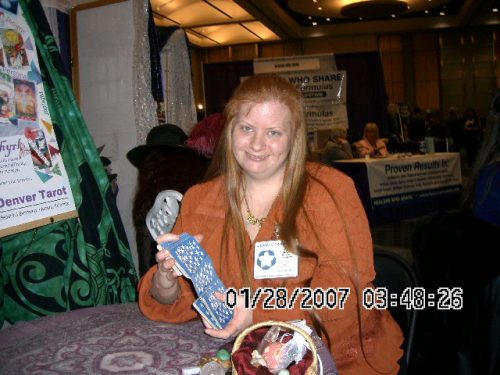
My first tarot deck was the Barbara Walker tarot. I also ended up getting a used Rider-Waite-Smith (RWS) not long after. When I started reading for clients, as directed by my teacher and within a short time of learning to read, I read with the RWS. However, after having a dream about the Morgan-Greer deck (see the heading, “15. Let Your Perfect Tarot Deck Choose You” of last week’s post to read about the dream), I switched to that deck for readings for clients and other people.
The imagery is fairly standard, but the colors are brighter and more saturated than the RWS. The borderless cards zoom in on RWS imagery, bringing me closer into the action. As I developed my skills and learned more about tarot, I discovered that some of the symbolism that differed from the RWS followed an older lineage. Also, there is one card, the IX of Pentacles, with a woman of color, and I appreciated having this small nod to diversity in this especially beautiful card. I love this deck and used it for client readings and psychic fairs during for the first fifteen years of my tarot career.
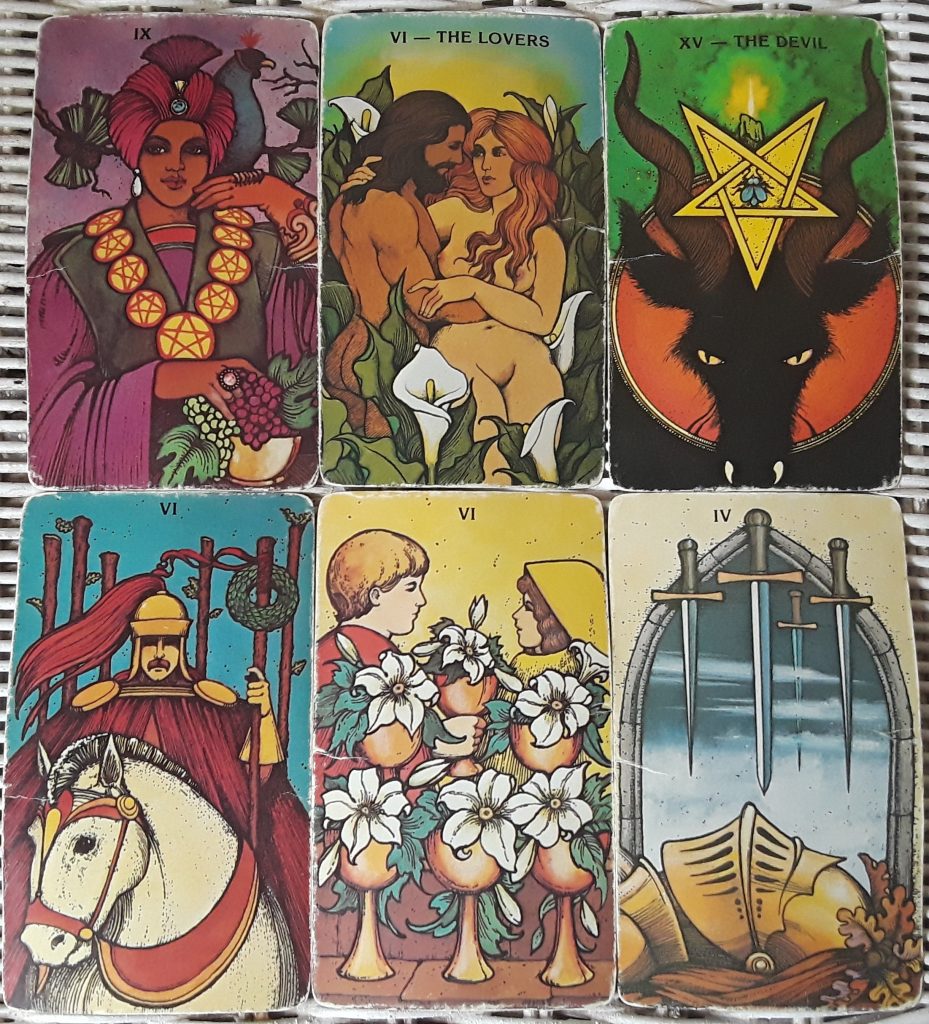
It can be surprising to learn a deck through the eyes of other people. One of the things that became apparent is that as we moved into the 21st century, this 1979 tarot deck started to seem dated. Almost all the men in this deck wear mustaches which is no longer popular. Also, the Lovers card, which shows a naked man and woman embracing in a field of lilies, is not appealing to the modern woman–I started getting more and more women make derogatory comments about the bearded, mustachioed and hairy man. When you lay down the best card in the deck for relationships and the first comment is “I hope he’s not that hairy” it undermines the reading. That card had never bothered me, but it apparently was a deal breaker for too many clients.
The other problem I had was the Devil card. With stark black, red, and green colors, a demonic looking flared-nostril goat, and a house fly in the center of an inverted pentagram, the symbolism was too shocking combined with too obscure to make sense of. The card was artistically not in the style of the other cards, as well, making it out of place in readings. And although this is definitely one of the negative cards of the deck, it still has a variety of meanings, and the more positive of those could not be coaxed visually from the card. Most people had a negative, visceral reaction to this card, and I yearned for something that would be less abrasive. This is the card that eventually motivated me to turn to my next deck.
Tarot of the Old Path
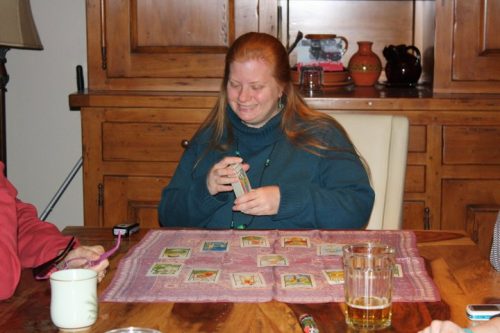
The Tarot of the Old Path, first published in 1991, was a much heralded deck whose symbolism was developed by a panel of Pagan luminaries including Wiccan authors and Priest and Priestess Stewart and Janet Farrar and NPR correspondent and author of Drawing Down the Moon, Margot Adler. I got this deck within a year or two of its first publication, and immediately fell for it.
I loved the softer colors, gentler interpretation of difficult cards, and openness of the white background with less cluttered, more detailed scenes. With a simple three-sided outline in lieu of the usual abrupt border, combined with images that break the frame, the illustrations appear to hover and extend, moving towards you or beckoning to neighboring cards. The colors correlate to the symbolism of the suits, which clearly illustrate either a predominance or a blending of the elements. This deck is easy to read, it follows a RWS lineage but is not so standard as to dull your senses, and grows with you as you sink deeper into its symbolism.
There’s little that I dislike about this deck, but in fact its main selling point unfortunately ended up being the cause of its demise in my library of client decks. The nature-based symbolism inspired the designers to set almost all the scenes of the cards outdoors. As a result, certain symbolism that needs to reflect structure and enclosure is diluted. In particular, although I love the High Priestess and High Priest (Hierophant) cards in this deck, I found their placement in outdoor settings to take them too far afield for how I usually read the cards. As always, I adjusted my readings to the illustration and developed suitable and inspiring interpretations.
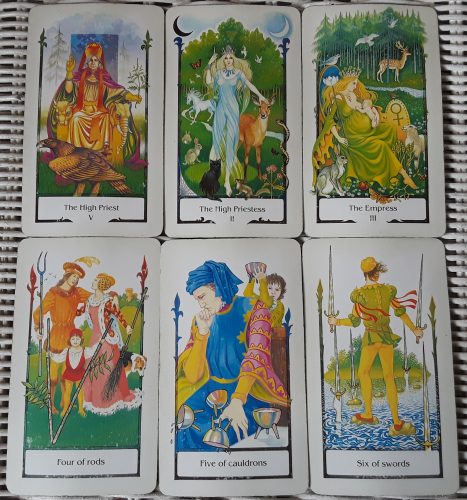
The High Priestess however was my downfall. I found her card to be too similar to the Empress, and seeing in both cards the trees, the stream, the field, the same animals, I found myself saying many similar things about the cards. Even though the nursing Empress clearly represents something different than the diaphanously clad Priestess, readers pull their interpretations from all layers of the card, not only noticing the dominant differences. The practically identical backgrounds of the two cards fogged my readings to my frustration. However, I never completely gave up on this deck, and still pull it out once in a while at psychic fairs.
Robin Wood

The artwork by Robin Wood in this Pagan-influenced deck is gorgeous. Like the Tarot of the Old Path, this deck also came out in 1991, although I don’t believe I added it to my collection until about fifteen years later. I think one of unique aspects of this deck is that although the Minor Arcana follow the RWS symbolism to a T, it is more often the Major Arcana which are reinterpreted freshly with a slant towards Pagan symbolism with some mythological overtones. The colors of the deck are bright but varied to create a range of emotional responses. Consider the 8 of Pentacles as the brown-haired boy bows his head over a wooden desk, where he works on brown and yellow carved wooden pentacles and the dull brown wood-grain screen half covers a window outside of which bright blue skies and lakes next to rolling green hills tempt. The juxtaposition of the drab indoors scene against the colorful landscape highlights the temptation of finishing his work so he can go out and play.
I liked this deck for its beauty, clarity, and color. The four suits use clear elemental imagery, especially in the court cards, which introduce clever and curious pages, gallant knights on fantasy horses, and cordial kings and queens. The fairy tale Empress at her spinning wheel, the High Priestess with the light and dark trees behind her under the full moon, and the triumphant phoenix Judgment card offer fresh perspectives.
Trump 15, the Devil card, shows a man and woman in a dark tunnel, chained to a treasure chest, one pulling toward an arch that opens into the light of sky and grass, the other pulling down the descending path. The card reminds me of the story of Orpheus and Eurydice, in which the musician who lost his true love to the depths of hell can only reclaim her if he leads her out into the light without looking back. The card can be interpreted simply in the standard manner as attachment to worldly goods, but lets you explore variations such as rescue, rules, and the tragedy of unfair loss.

Due to the portraiture’s high level of detail, which is one of the best things about this deck, the nudity unfortunately becomes a touch too graphic for reading for clients. My choices for client decks are more conservative than what I would choose for myself. I ended up using this deck as my phone reading deck when I worked on a psychic line for about a year. Also, I simply found the Minor Arcana too standard in their symbolism and wanted to move to a deck that offered new layers for me to explore.
What are your favorite decks? Please let me know in the comments! And check back next week when I share three more favorite decks!
***
If you’d like to learn to read the tarot with no memorization or books, simply letting the cards speak for themselves, check out my upcoming Magician’s Tools: Beginning Tarot class, Sundays, February 11-March 18, 2018, 2:30-4:30 p.m. at Isis Books and Gifts, 2775 South Broadway, Englewood, CO 80113.
If you’re getting started and want to know the best beginner deck, please take a look at my post on 50 Beginning Tarot Decks.



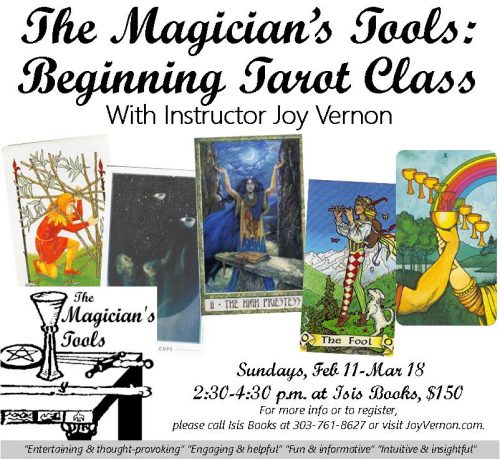
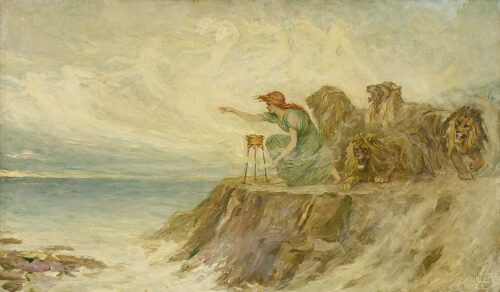




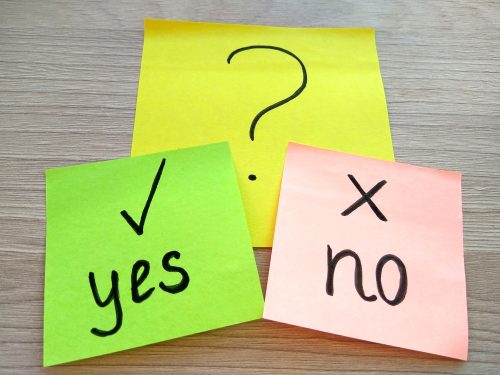
Hi Joy, my name is Winnie and I’ve been reading Tarot for many years also. I happened to find your website recently and want to say that I do enjoy reading others’ perceptions regarding the Tarot.
Your thoughts on the Rider-Waite deck, I disagree with somewhat. I feel that it is a great deck to start out with. It’s colorful and busy but no too busy where one could get confused or distracted. It would also depend on whether the person is just learning the meanings vs learning the meanings and using their intuitiveness together or just using their intuition to read the cards. I feel that no matter what one is starting out to learn, they must have some basic knowledge about the subject and in this case the cards. I understand that if the RWD does not call to the person then it wouldn’t be a good deck to begin with but overall I think its a great deck to start with.
Again love your Blog! Blessings
Hi Winnie! Thanks for reading! I’ll be publishing my ideas as to why I don’t recommend the RWS deck to beginners (it’s not what you think!) in a couple weeks. But for a quick highlight, I mention my ideas briefly in this post: http://joyvernon.com/Blog/50-beginning-tarot-decks/. Thanks for the comment!
[…] a depth to this deck that lets readings flow with ease and uncanny accuracy. This is on my list of favorite decks and was one of my first tarot decks when I was a […]